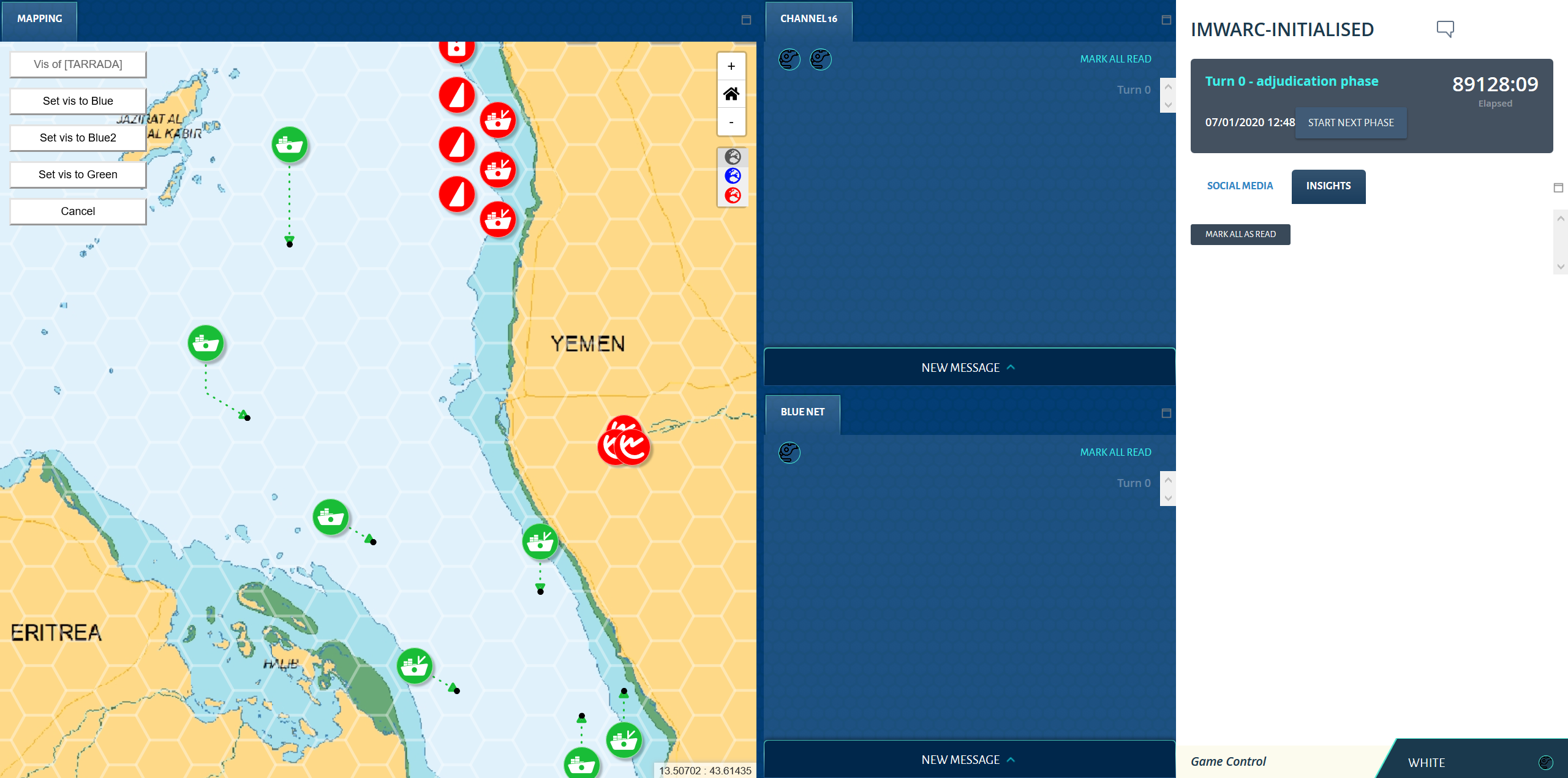SERGE. SERious Gaming, Evolved
| At a Glance | |
|---|---|
| Domain | Simulation - Wargaming - Defense |
| Type | UX research (15%), UX design (85%) |
| Skills | User flow, information architecture, wireframes, prototypes, workshop |
| Tools | AdobeXD (1st phase), Figma (2nd phase) |
| Duration | 1+ year (on-going) |
Serge is a browser-based war-gaming tool used by the British Navy.
Objectives:
- Provide a platform for game designers to create any type of wargame scenarios
- Design a user-friendly web interface for players to interact
- Record every in-game move and interaction for future analysis
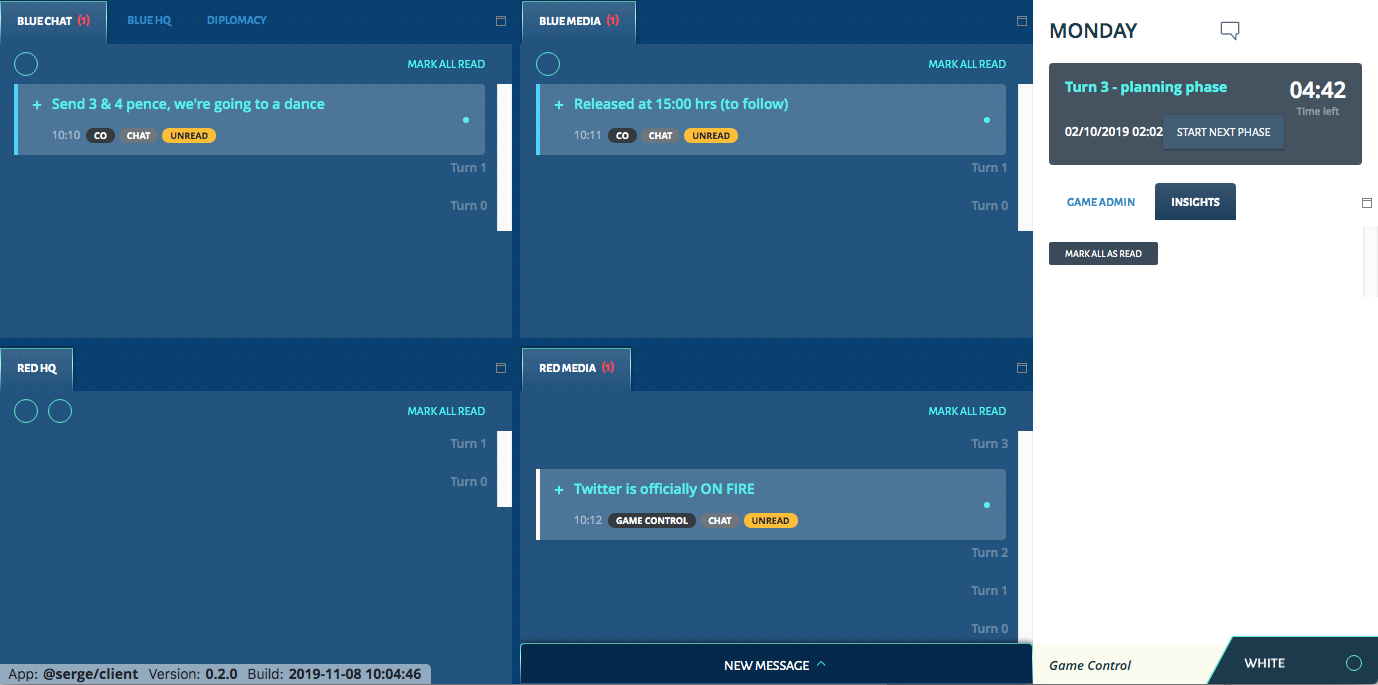
Player UI - communication channels
Target Users:
- Wargame designers and analysts
- Navy trainees to high-rank officers
Challenges:
- Only one interface to support multiple functions: mapping, communications and admin
- Multiple displays: touch table, interactive whiteboard, laptop screen and large monitor
- Capabilities need to be as close to reality as possible: this is used for training or simulation purposes, not for fun.
Team members
Core Team
- Product owner & developer (PO)
- Lead developer (LD)
- UX designer (UX - me)
Plus: additional developers (up to 3), graphic designer (as needed)
Process:
First phase: basic framework & communication channels
I worked closely with the product owner on the first steps:
- User flows for game designer, player, umpire
- Game admin architecture
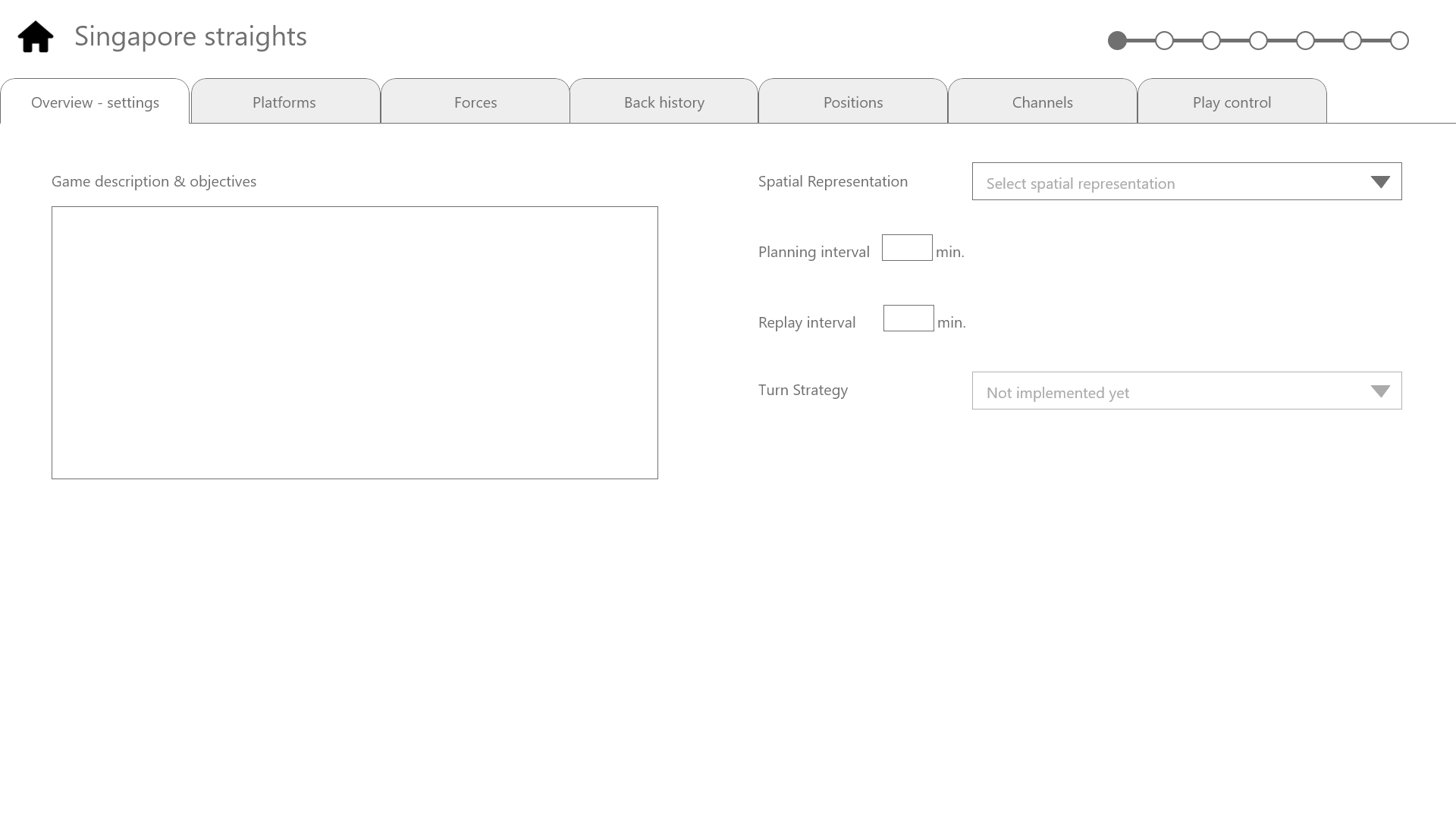
Game designer UI - wireframe
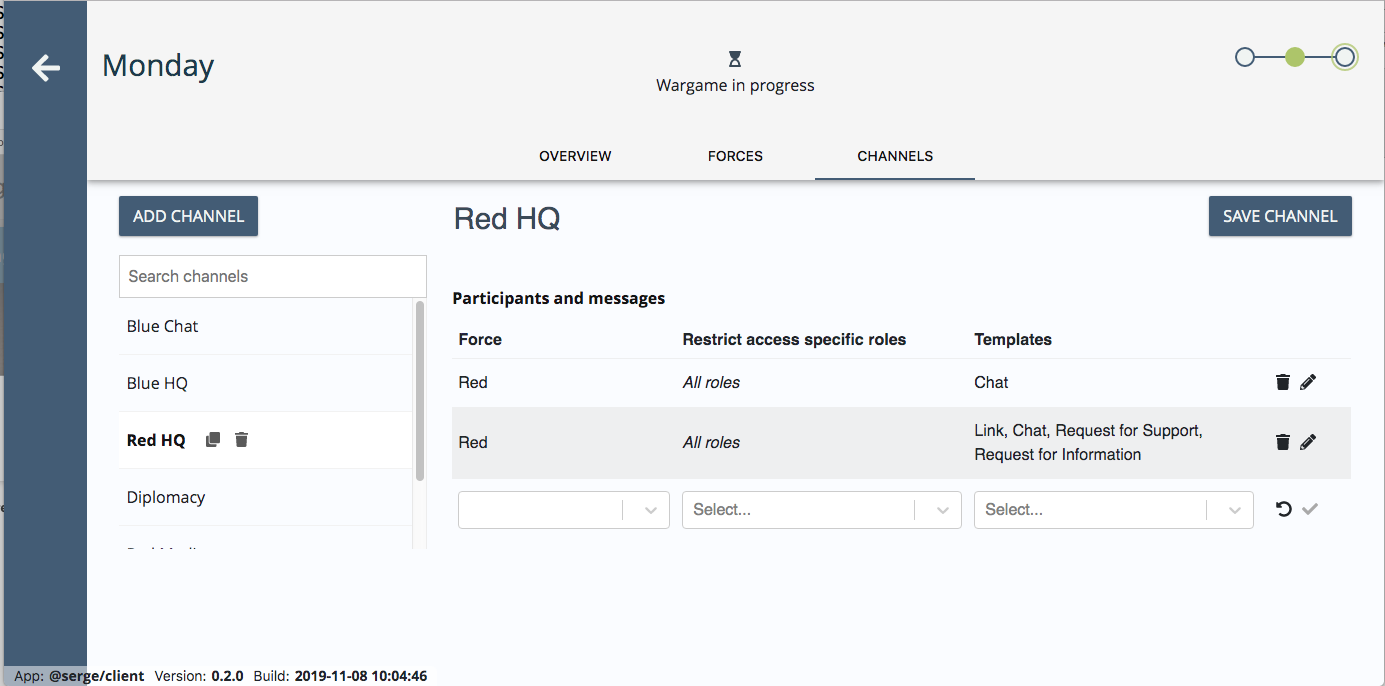
Game designer UI
- Layout of player & umpire UI: 2 different and flexible options
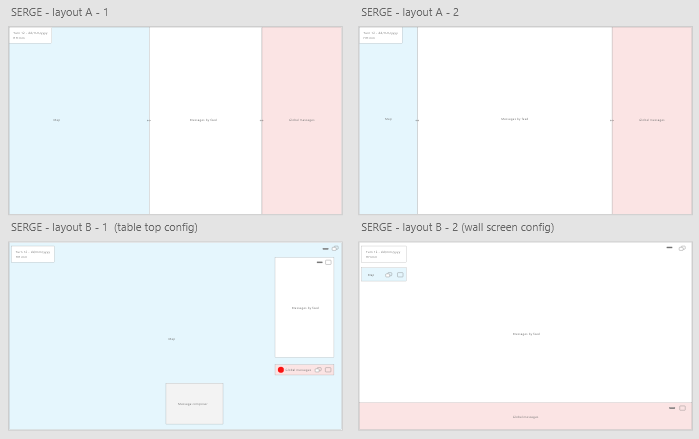
2 options for general layout
- Low-fidelity wireframes of communication channels
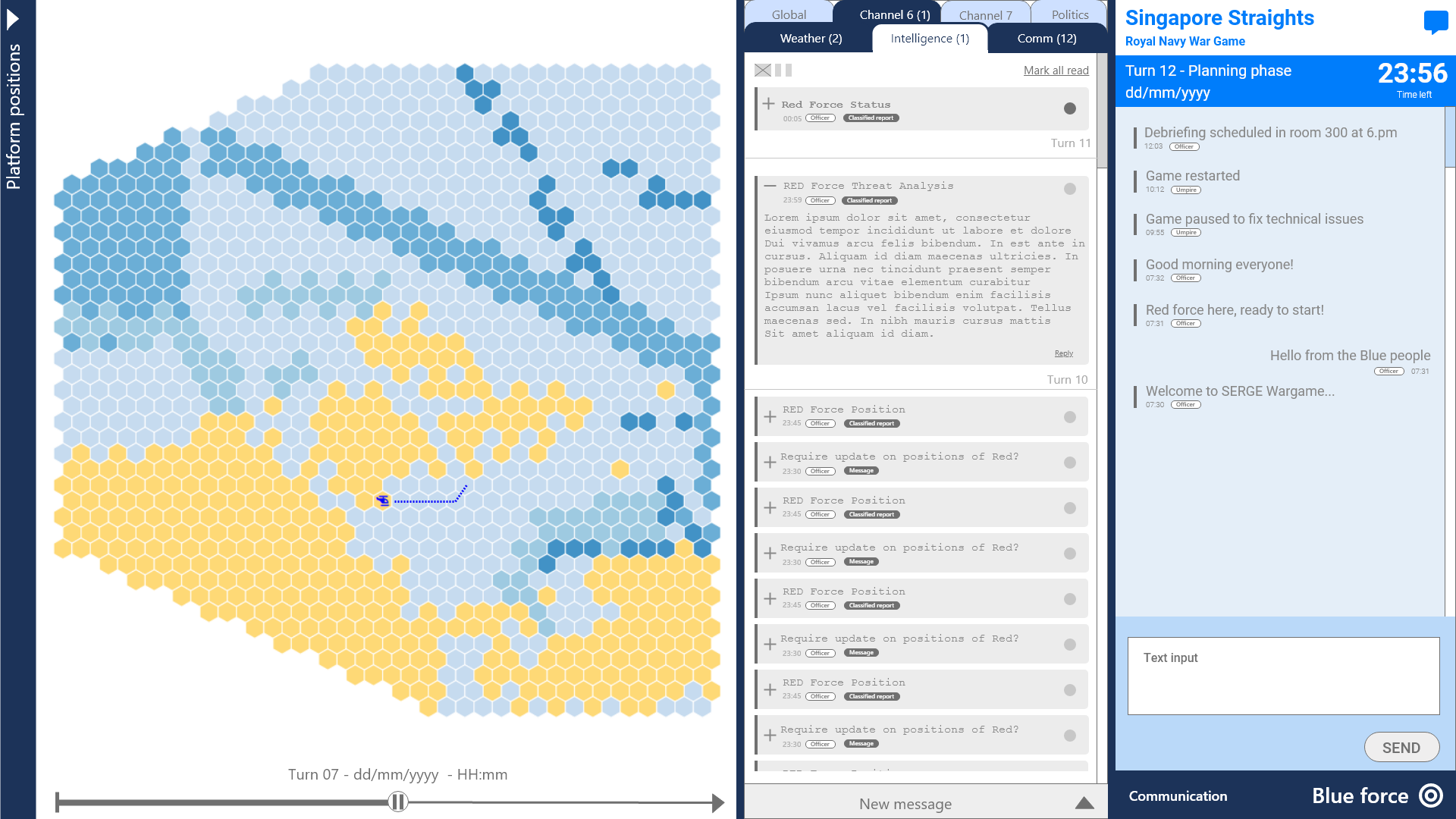
Player UI - wireframe
Both PO and lead developer developped the back-end and front-end. A graphic designer suggested different high-fidelity designs before we settled on a version of a material design dark theme.
The first release was tested during a wargame in July 2019. PO and LD could attend thanks to their security clearance (I could not unfortunately). They were able to observe the game in real-time and identify additional needs as well as the pain points users were facing.

Player UI - communication channels
Second phase (on-going): mapping capabilities & task groups
A first workshop allowed us to review the way players and designers interact with a map and to discuss the best options to implement digital mapping.
A very quick implementation (one month) followed by testing with trainees gave us valuable feedback to refine the mapping features. We are now working on adding task groups.
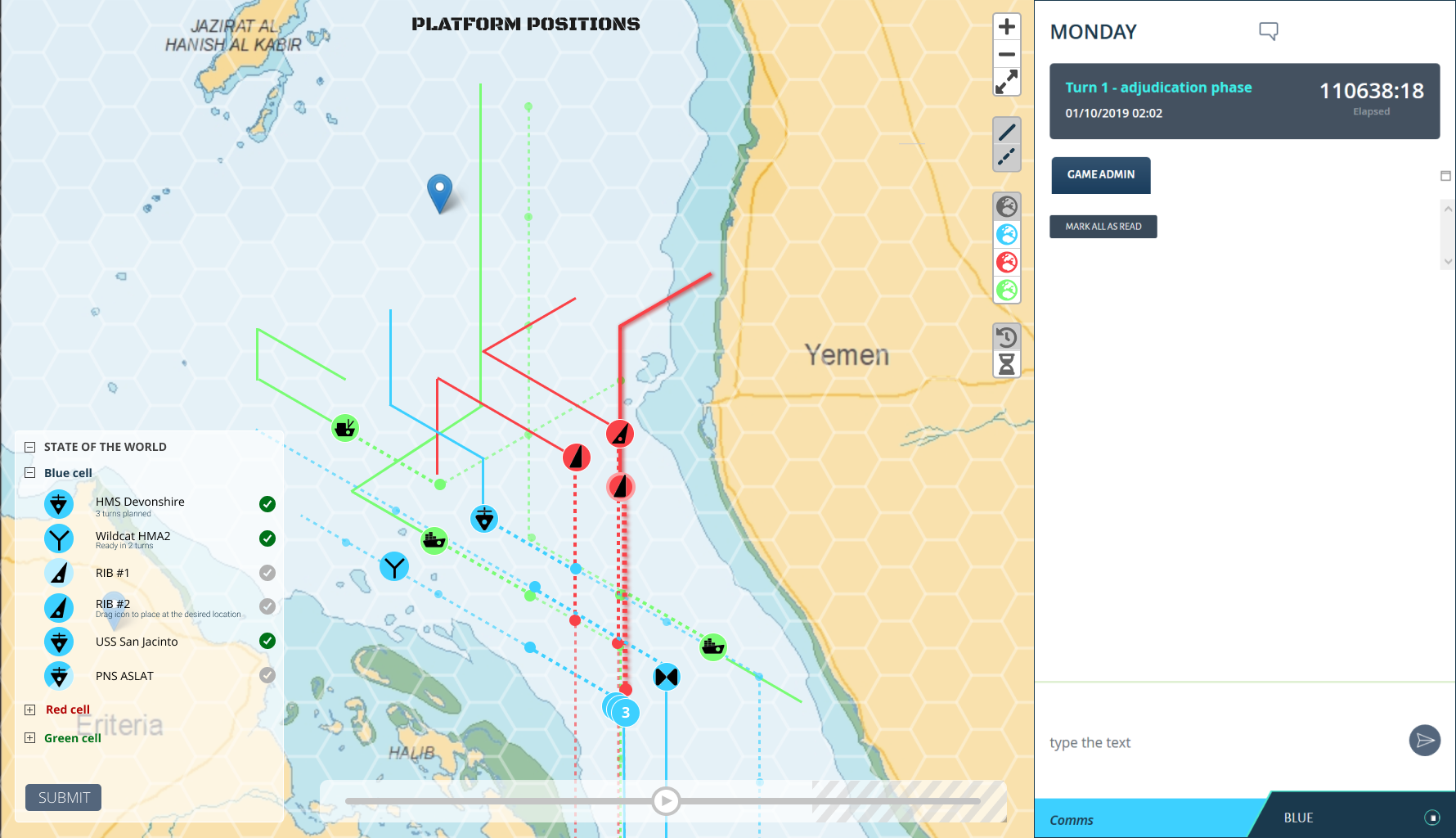
Umpire UI - Map view of all forces - Mockup
